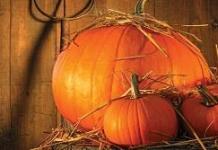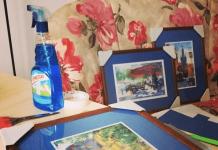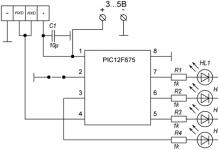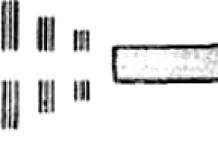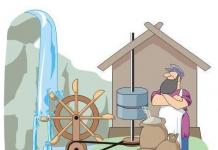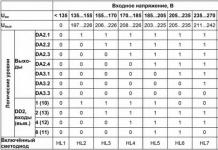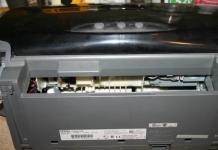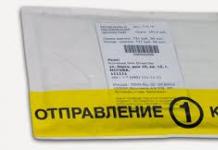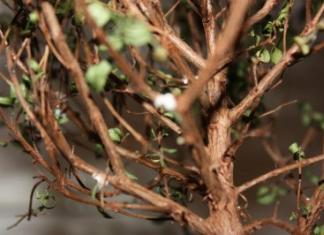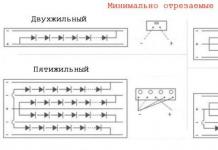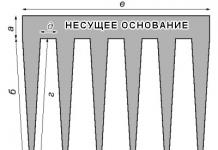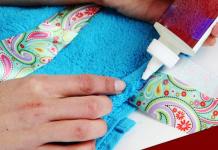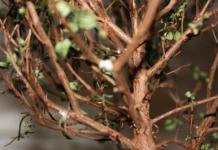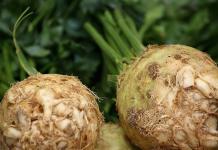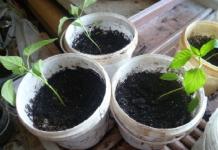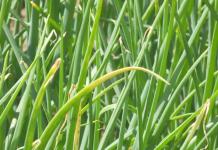GOST 6942-98
UDC 696.133:669.13:006.354 Group Zh21
INTERSTATE STANDARD
CAST IRON SEWER PIPES AND
FITTINGS FOR THEM
Specifications
CAST IRON WASTE PIPES AND FITTINGS
OKSTU 4925 OKS 91.140.70
Date of introduction 1999-01-01
Preface
1 DEVELOPED by the Scientific Research Institute of Sanitary Engineering (NIIsantekhniki) of the Russian Federation
INTRODUCED by the State Construction Committee of Russia
2 ADOPTED by the Interstate Scientific and Technical Commission for Standardization, Technical Regulation and Certification in Construction (MNTKS) on November 12, 1998.
|
State name |
Name of the state construction management body |
|
Republic of Armenia |
Ministry of Urban Development of the Republic of Armenia |
|
The Republic of Kazakhstan |
Committee on Housing and Construction Policy under the Ministry of Energy, Industry and Trade of the Republic of Kazakhstan |
|
Republic of Kyrgyzstan |
State Inspectorate for Architecture and Construction under the Government of the Kyrgyz Republic |
|
The Republic of Moldova |
Ministry of Territorial Development, Construction and Communal Services of the Republic of Moldova |
|
Russian Federation |
Gosstroy of Russia |
|
The Republic of Tajikistan |
State Construction Committee of the Republic of Tajikistan |
3 INSTEAD OF GOST 6942.0-80 - GOST 6942.24-80, GOST 4.227-83.
4 ENTERED INTO EFFECT on January 1, 1999 as a state standard of the Russian Federation by Decree of the State Construction Committee of Russia dated December 31, 1998 No. 31.
1 area of use
This standard applies to cast iron sewer pipes and fittings for them intended for internal sewage systems of buildings.
Mandatory requirements for product quality are set out in: 5.1; 5.2.2 - 5.2.4; 5.2.7; 5.2.8; 5.3.1; 5.3.2.
GOST 164-90 Height gauges. Specifications
GOST 166-89 Calipers. Specifications
GOST 1412-85 Cast iron with flake graphite for castings. Stamps
GOST 9812-74 Petroleum insulating bitumens. Specifications
GOST 15150-69 Machines, instruments and other technical products. Versions for different climatic regions. Categories, operating, storage and transportation conditions regarding the impact of environmental climatic factors
GOST 18510-87 Writing paper. Specifications
GOST 26358-84 Iron castings. General technical conditions
GOST 26598-85 Containers and packaging means in construction. General technical conditions
GOST 26645-85 Castings from metals and alloys. Dimensional, mass and machining allowances.
3 Assortment
3.1 The range of pipes and fittings must correspond to those indicated in Table 1.
Table 1
|
Name |
Conditional diameters, mm |
Symbol |
||
|
graphic |
alphabetic |
|||
|
Pipes |
||||
|
Compensation pipes |
|
|||
|
Transition pipes |
|
PP-D 1 x D y |
||
|
Low knees |
||||
|
Bends 110° and 120° |
About 110°-D or |
|||
|
Bends 135° |
||||
|
Bends 150° |
||||
|
Instrument tee bends |
OTPr-100x50 or LOTPr-100x50 |
|||
|
Straight tees |
|
TP-D y x d y |
||
|
Straight compensation tees |
|
TPK-D y x d y |
||
|
Straight low tees |
|
|||
|
Straight transition tees |
|
TPR-100/50x100 |
||
|
Straight transitional low tees |
|
TPRN-100/50x100 |
||
|
Tees oblique 45° and 60° |
|
TK45°-D y x d y and TK60°-D y x d y |
||
|
Crosspieces are straight |
|
KP-D y x d y |
||
|
Crosspieces are straight with an offset axis of removal |
|
KPS-D y x d y |
||
|
Crosses oblique 45° and 60° |
|
KK45°-D y x d y and KK60°-D y x d y |
||
|
Two-plane crosspieces |
|
KD-D y x d y x d y LKD-D y x d y x d y |
||
|
|
||||
|
Sliding couplings |
|
|||
|
|
||||
|
Stub |
||||
|
Transitional tees |
||||
|
Cleaning |
||||
4 Types, designs and sizes
4.1.1 The design and dimensions of the pipes must correspond to those indicated in Figure 1 and Table 2.
It is allowed, by agreement between the consumer and the manufacturer, to manufacture pipes without sockets and supply them complete with MF couplings. The length of such pipes may differ from that indicated in the table.
An example of a symbol for a cast iron sewer pipe D y = 100 mm, L = 2000 mm:
ТЧК-100-2000 GOST 6942-98

Picture 1
Table 2 Dimensions in millimeters
|
Conditional diameter D |
Construction length L |
Weight, kg |
|||||||||||||
4.2 Sockets and shanks of fittings
4.2.1 Sockets of fittings are made of four types: I, II, III, IV.
4.2.2 The design and dimensions of type I sockets must correspond to those indicated in Figure 2 and Table 3, type II - in Figure 3 and Table 4, type III - in Figure 4 and type IV - in Figure 5. Dimensions are given without taking into account the anti-corrosion coating . The option of manufacturing sockets of types I, II, IV without an annular groove on the inner surface of the sockets is allowed.

*Dimensions for reference
Figure 2
Table 3 In millimeters
|
Conditional diameter D |
l min. |
||||||||||

*Dimensions for reference
Figure 3
Table 4 In millimeters
|
Nominal diameter D y |
||||||||||

Figure 4

*Dimensions for reference
Figure 5
4.2.3 The design and dimensions of the shanks of the fittings must correspond to those indicated in Figure 6 and Table 5.

Figure 6
Table 5 In millimeters
|
Conditional diameter D |
|||
4.3 Connections
4.3.1 The design and dimensions of the nozzles must correspond to those indicated in Figure 7 and Table 6.
An example of a pipe designation D y = 100 mm, L = 250 mm;
P-100-250 GOST 6942-98

Figure 7
1 - type I socket; 2 - shank
Table 6 Dimensions in millimeters
|
Conditional diameter Dу |
Construction length L |
Weight, kg |
4.4 Compensation pipes
4.4.1 The design and dimensions of the expansion pipes must correspond to those shown in Figure 8 and Table 7.
An example of a symbol for a compensation pipe D y = 100 mm:
PK-100 GOST 6942-98

1 - type II socket; 2 - shank
GOST 6942-98
UDC 696.133:669.13:006.354 Group Zh21
INTERSTATE STANDARD
CAST IRON SEWER PIPES AND
FITTINGS FOR THEM
Specifications
CAST IRON WASTE PIPES AND FITTINGS
OKSTU 4925 OKS 91.140.70
Date of introduction 1999-01-01
Preface
1 DEVELOPED by the Scientific Research Institute of Sanitary Engineering (NIIsantekhniki) of the Russian Federation
INTRODUCED by the State Construction Committee of Russia
2 ADOPTED by the Interstate Scientific and Technical Commission for Standardization, Technical Regulation and Certification in Construction (MNTKS) on November 12, 1998.
State name |
Name of the state construction management body |
Republic of Armenia |
Ministry of Urban Development of the Republic of Armenia |
The Republic of Kazakhstan |
Committee on Housing and Construction Policy under the Ministry of Energy, Industry and Trade of the Republic of Kazakhstan |
Republic of Kyrgyzstan |
State Inspectorate for Architecture and Construction under the Government of the Kyrgyz Republic |
The Republic of Moldova |
Ministry of Territorial Development, Construction and Communal Services of the Republic of Moldova |
Russian Federation |
Gosstroy of Russia |
The Republic of Tajikistan |
State Construction Committee of the Republic of Tajikistan |
3 INSTEAD OF GOST 6942.0-80 - GOST 6942.24-80, GOST 4.227-83.
4 ENTERED INTO EFFECT on January 1, 1999 as a state standard of the Russian Federation by Decree of the State Construction Committee of Russia dated December 31, 1998 No. 31.
1 area of use
This standard applies to cast iron sewer pipes and fittings for them intended for internal sewage systems of buildings.
Mandatory requirements for product quality are set out in: 5.1; 5.2.2 - 5.2.4; 5.2.7; 5.2.8; 5.3.1; 5.3.2.
GOST 164-90 Height gauges. Specifications
GOST 166-89 Calipers. Specifications
GOST 1412-85 Cast iron with flake graphite for castings. Stamps
GOST 9812-74 Petroleum insulating bitumens. Specifications
GOST 11506-73 Petroleum bitumens. Method for determining the softening temperature by ring and ball
GOST 15150-69 Machines, instruments and other technical products. Versions for different climatic regions. Categories, operating, storage and transportation conditions regarding the impact of environmental climatic factors
GOST 18510-87 Writing paper. Specifications
GOST 26358-84 Iron castings. General technical conditions
GOST 26598-85 Containers and packaging means in construction. General technical conditions
GOST 26645-85 Castings from metals and alloys. Dimensional, mass and machining allowances.
3 Assortment
3.1 The range of pipes and fittings must correspond to those indicated in Table 1.
Table 1
Name |
Conditional diameters, mm |
Symbol |
||
graphic |
alphabetic |
|||
Pipes |
||||
Compensation pipes |
|
|||
Transition pipes |
|
PP-D 1 x D y |
||
Low knees |
||||
Bends 110° and 120° |
About 110°-D or |
|||
Bends 135° |
||||
Bends 150° |
||||
Instrument tee bends |
OTPr-100x50 or LOTPr-100x50 |
|||
Straight tees |
|
TP-D y x d y |
||
Straight compensation tees |
|
TPK-D y x d y |
||
Straight low tees |
|
|||
Straight transition tees |
|
TPR-100/50x100 |
||
Straight transitional low tees |
|
TPRN-100/50x100 |
||
Tees oblique 45° and 60° |
|
TK45°-D y x d y and TK60°-D y x d y |
||
Crosspieces are straight |
|
KP-D y x d y |
||
Crosspieces are straight with an offset axis of removal |
|
KPS-D y x d y |
||
Crosses oblique 45° and 60° |
|
KK45°-D y x d y and KK60°-D y x d y |
||
Two-plane crosspieces |
|
KD-D y x d y x d y LKD-D y x d y x d y |
||
|
||||
Sliding couplings |
|
|||
|
||||
Stub |
||||
Transitional tees |
||||
Cleaning |
||||
4 Types, designs and sizes
4.1.1 The design and dimensions of the pipes must correspond to those indicated in Figure 1 and Table 2.
It is allowed, by agreement between the consumer and the manufacturer, to manufacture pipes without sockets and supply them complete with MF couplings. The length of such pipes may differ from that indicated in the table.
An example of a symbol for a cast iron sewer pipe D y = 100 mm, L = 2000 mm:
ТЧК-100-2000 GOST 6942-98

Picture 1
Table 2 Dimensions in millimeters
Conditional diameter D |
Construction length L |
Weight, kg |
|||||||||||||
4.2 Sockets and shanks of fittings
4.2.1 Sockets of fittings are made of four types: I, II, III, IV.
4.2.2 The design and dimensions of type I sockets must correspond to those indicated in Figure 2 and Table 3, type II - in Figure 3 and Table 4, type III - in Figure 4 and type IV - in Figure 5. Dimensions are given without taking into account the anti-corrosion coating . The option of manufacturing sockets of types I, II, IV without an annular groove on the inner surface of the sockets is allowed.

*Dimensions for reference
Figure 2
Table 3 In millimeters
Conditional diameter D |
|||||||||||||||

*Dimensions for reference
Figure 3
Table 4 In millimeters
Nominal diameter D y |
|||||||||||||||

Figure 4

*Dimensions for reference
Figure 5
4.2.3 The design and dimensions of the shanks of the fittings must correspond to those indicated in Figure 6 and Table 5.

Figure 6
Table 5 In millimeters
4.3 Connections
4.3.1 The design and dimensions of the nozzles must correspond to those indicated in Figure 7 and Table 6.
An example of a pipe designation D y = 100 mm, L = 250 mm;
P-100-250 GOST 6942-98

Figure 7
Table 6 Dimensions in millimeters
Conditional diameter Dу |
Construction length L |
Weight, kg |
|||||||||||||
4.4 Compensation pipes
4.4.1 The design and dimensions of the expansion pipes must correspond to those shown in Figure 8 and Table 7.
An example of a symbol for a compensation pipe D y = 100 mm:
PK-100 GOST 6942-98

1 - type II socket; 2 - shank
Figure 8
Table 7 Dimensions in millimeters
4.5 Transition pipes
4.5.1 The design and dimensions of the transition pipes must correspond to those indicated in Figure 9 and Table 8.
An example of a designation for a transition pipe D y1 = 50 mm and D y = 100 mm:
PP-50/100 GOST 6942-98

Figure 9
Table 8
4.6 Knees
4.6.1 The design and dimensions of the elbows must correspond to those shown in Figure 10 and Table 9.
An example of a symbol for an elbow D y = 100 mm;
K-100 GOST 6942-98

(= 92° 30 " ± 1°30 " ; 1- bell type I; 2 - shank
Figure 10
Table 9 Dimensions in millimeters
4.7 Low knees
4.7.1 The design and dimensions of the low elbows must correspond to those shown in Figure 11. The weight of the low elbow is 3.4 kg. Symbol for low knee:
KN-100 GOST 6942-98

1 - type IV bell; 2 - shank
Figure 11
4.8 Bends 110° and 120°
4.8.1 The design and dimensions of the bends must correspond to those indicated in Figure 12 and in Tables 10 and 11.
An example of a symbol for a bend with (= 120° and D y = 50 mm:
О 120°-50 GOST 6942-98
The same, with (= 150° and D y = 100D (extended) mm:
O 150°-100D GOST 6942-98

1 - type I socket; 2 - shank
Figure 12
Table 10 Dimensions in millimeters
Table 11 Dimensions in millimeters
4.9 Instrument tees
4.9.1 Instrument tees are manufactured in two versions: right and left.
4.9.2 The design and dimensions of instrument tees must correspond to those shown in Figure 13. The mass of the tees is 7.0 kg.
Symbol of the instrument tee-bend in the right version:
OTPr GOST 6942-98
The same, in the left version:
LOTPr GOST 6942-98

1 - type I socket; 2 - type III bell; 3 - shank
Figure 13
4.10 Indents
4.10.1 The design and dimensions of the indents must correspond to those indicated in Figure 14 and Table 12.
An example of a symbol for the indentation D y = 100 mm:
OTS-100 GOST 6942-98

1 - type 1 bell; 2 - shank
Figure 14
Table 12 Dimensions in millimeters
4.11 Straight tees
4.11.1 The design and dimensions of straight tees must correspond to those indicated in Figure 15 and Table 13.
An example of a symbol for a straight tee D y = 50 mm and d y = 50 mm:
TP-50x50 GOST 6942-98
The same, long, D y = 100 mm and d y = 100D mm:
TP-100x100D GOST 6942-98

Figure 15
(= 87°30 " +1°30 "
Table 13 Dimensions in millimeters
Conditional pass |
Weight, kg |
||||
4.12 Direct compensation tees
4.12.1 The design and dimensions of direct compensation tees must correspond to those indicated in Figure 16 and Table 14.
An example of the designation of a direct compensation tee D y = 100 mm, d y = 50 mm:
TPK-100x50 GOST 6942-98

1 - type II socket; 2 - type I bell; 3-shank
Figure 16
Table 14 Dimensions in millimeters
4.13 Straight low tees
4.13.1 The design and dimensions of straight low tees must correspond to those shown in Figure 17. The weight of the tee is 5.8 kg.
Symbol for straight low tee:
TN-100x100 GOST 6942-98

1 - type I socket; 2 - type IV bell; 3 - shank
Figure 17
4.14 Straight transition tees
4.14.1 The design and dimensions of straight transition tees must correspond to those shown in Figure 18. The weight of the tee is 6.8 kg.
Designation of a straight transition tee:
TPR-100/50x100 GOST 6942-98

(= 87°30 " ± 1°30 " ; 1 - type I socket; 2 - shank
Figure 18
4.15 Straight transitional low tees
4.15.1 The design and dimensions of straight transition low tees must correspond to those shown in Figure 19. The weight of the tee is 4.7 kg.
Symbol for straight transition low tee:
TPRN-100/50x100 GOST 6942-98

1 - type I socket; 2 - type IV bell; 3 - shank
Figure 19
4.16 Oblique tees
4.16.1 The design and dimensions of oblique tees must correspond to those indicated in Figure 20 and Table 15.
An example of a symbol for an oblique tee with (= 45°, D y = 100 mm and d y = 50 mm:
TK 45°-100x50 GOST 6942-98
The same, with 60°, D y = 150 mm and d y = 100 mm:
TK 60°-150x100 GOST 6942-98

1 - type I socket; 2 - shank
Figure 20
Table 15 Dimensions in millimeters
Conditional pass |
Weight, kg |
||||
At (= 45°±1°30 " |
|||||
At (= 60°±1°30 " |
|||||
4.17 Straight crosses
4.17.1 The design and dimensions of straight crosses must correspond to those indicated in Figure 21 and Table 16.
An example of a symbol for a straight cross D y = 100 mm and d y = 50 mm:
KP-100x50 GOST 6942-98

(= 87°30 " ± 1°30 " ; 1 - type I socket; 2 - shank
Figure 21
Table 16 Dimensions in millimeters
Conditional pass |
Weight, kg |
||||
4.18 Straight crosspieces with offset axis of retraction
4.18.1 The design and dimensions of straight crosses with an offset axis of the outlet must correspond to those shown in Figure 22. The mass of the tee is 7.6 kg.
Symbol for a straight cross with an offset axis of removal:
KPS-100x50 GOST 6942-98

(= 87°30 " ± 1°30 " ; 1 - type I socket; 2 - shank
Figure 22
4.19 Oblique crosses
4.19.1 The design and dimensions of the oblique crosses must correspond to those indicated in Figure 23 and Table 17.
An example of a symbol for an oblique cross with (= 45°, D y = 100 mm and d y = 100 mm:
KK45°-100x100 GOST 6942-98
The same, with (= 60°, D y = 150 mm and d y == 50 mm:
KK 60° -150x50 GOST 6942-98

1- bell type I; 2 - shank
Figure 23
Table 17 Dimensions in millimeters
Conditional pass |
Weight, kg |
||||
At (= 45°±1°30 " |
|||||
At (= 60°±1°30 " |
|||||
4.20 Two-plane crosspieces
4.20.1 Two-plane crosspieces are manufactured in two versions: right and left.
4.20.2 The design and dimensions of two-plane crosses must correspond to those indicated in Figure 24 and Table 18.
An example of a symbol for a two-plane cross D y = 150 mm in the right version:
KD-150x100x50 GOST 6942-98
The same, in the left version:
LKD-150x100x50 GOST 6942-98


(= 87°30 " ±1°30 " ; 1 - type I socket; 2 - type III bell; 3 - shank
Figure 24
Table 18 Dimensions in millimeters
Conditional |
|||||
passage D |
Weight, kg |
||||
4.21.1 The design and dimensions of the couplings must correspond to those shown in Figure 25 and Table 19.
An example of a designation for a coupling D y = 100 mm:
Mf-100 GOST 6942-98

1 - socket type I
Figure 25
Table 19
4.22 Sliding couplings
4.22.1 The design and dimensions of push-in couplings must correspond to those indicated in Figure 26 and Table 20.
An example of a symbol for a sliding coupling D у =100 mm:
MfN-100 GOST 6942-98

1 - socket type II
Figure 26
Table 20 Dimensions in millimeters
4.23 Revision
4.23.1 The design and dimensions of the revisions must correspond to those indicated in Figure 27 and Table 21.
An example of a designation for revision D у =100 mm:
R-100 GOST 6942-98
4.23.2 It is allowed to place the bolts in plane A-A and make cover 2 from steel.

1 - type I socket; 2 - cover; 3 - gasket; 4 - body; 5 - shank;
6 - nut; 7 - bolt
Figure 27
Table 21 Dimensions in millimeters
Conditional |
|||||||
passage D y |
Weight, kg |
||||||
4.24 Plugs
4.24.1 The design and dimensions of the plugs must correspond to those indicated in Figure 28 and Table 22.
An example of a designation for a plug D y =100 mm:
3-100 GOST 6942-98
4.24.2 It is allowed to place the bolts in the BB plane and make the cover 3 from steel.

1- bolt; 2 - nut; 3 - cover; 4 - gasket; 5 - body; 6 - shank
Figure 28
Table 22 Dimensions in millimeters
Conditional diameter D |
Number of bolts |
Weight, kg |
|||
4.25 Transitional tee bends
4.25.1 The design and dimensions of transition tees must correspond to those shown in Figure 29. The mass of the transition tees is 7.8 kg.
An example of a symbol for a transition tee:
OTP-100x50 GOST 6942-98

1 - type I socket; 2 - shank
Figure 29
4.26 Cleaning
4.26.1 The design and dimensions of clearings must correspond to those indicated in Figure 30 and Table 23. An example of a clearing symbol:
Pr-100 GOST 6942-98
4.26.2 Cleaners must be supplied complete with all parts indicated in the figure and assembled.

1 - type I socket; 2 - nut; 3 - bolt; 4 - cover; 5 - gasket;
6 - body; 7 - shank
Figure 30
Table 23 Dimensions in millimeters
4.27 Dimensions and weight are given without taking into account the anti-corrosion coating.
5. Technical requirements
5.1 Cast iron sewer pipes and fittings for them should be manufactured in accordance with the requirements of this standard, according to design and technological documentation approved in the prescribed manner.
5.2 Characteristics
5.2.1 Pipes and fittings for them must not have defects that impair their installation and operational qualities: spills, build-ups, drops of metal, slag deposits on the outer and inner surfaces. It is allowed to eliminate minor defects caused by the production method and which do not impair the quality of the products.
5.2.2 Pipes and fittings for them must not have a chill over the entire outer surface with a depth of more than 1 mm, and at the ends and outer surface of the smooth ends of pipes at a length of 60 mm from the end and in places where molds are separated on fittings - with a depth of more than 2 mm.
5.2.3 Deviations from the nominal dimensions of the internal diameters of the sockets of pipes and fittings and the outer diameters of the smooth ends of pipes and tails of fittings (before applying an anti-corrosion coating to the product) should not exceed ±2 mm. Deviations from the dimensions of construction lengths in products of all types and diameters should not exceed ± 0.9%.
5.2.4 It is allowed to thicken by no more than 2 mm the walls of the smooth ends of pipes in a section up to 150 mm long and the shanks of fittings in a section up to 70 mm long from their ends with a corresponding reduction in the internal diameters of the products in these places, as well as rounding on the outside the ends of the smooth ends of pipes and the shanks of fittings.
5.2.5 Maximum deviations from the nominal dimensions of castings of products, with the exception of those regulated in 3.2.3 and 3.2.4, must correspond to the 11t accuracy class according to GOST 26645.
5.2.6 Deviations from the calculated values of the masses of products established in the design standards, and the dimensions of these products (for the calculation of which the density of cast iron is taken to be 7.1 g/cm3) must correspond to the 11 t accuracy class according to GOST 26645.
Castings whose weight exceeds the maximum are considered acceptable provided that in all other quality characteristics they comply with this standard.
5.2.7 Deviations from straightness of pipes D at 100 and D at 150 mm should not exceed 2 mm per 1 m of length, and for pipes D at 50 mm - 5 mm per 1 m of length.
5.2.8 Pipes and fittings assemblies, after applying an anti-corrosion coating to their internal and external surfaces and sealing the sockets, must withstand a hydraulic pressure of at least 0.1 MPa (1.0 kgf/cm2).
5.3 Requirements for raw materials, materials and components
5.3.1 Pipes and fittings for them must be made of gray cast iron with flake graphite in accordance with GOST 1412 and in accordance with the requirements for castings in accordance with GOST 26358.
5.3.2 The outer and inner surfaces of pipes and fittings must be coated with an anti-corrosion composition based on bitumen grade BNI IU-3 according to GOST 9812 or other compositions that ensure the softening temperature of the anti-corrosion coating is not lower than 333 K (60 ° C) and operating conditions UHL 4 GOST 15150.
The anti-corrosion coating must be continuous, durable, smooth, without cracks or bubbles, firmly adhered to the metal of the product and should not be sticky.
On the surface of the pipe coating, ring marks from supports for rolling pipes are allowed, and on the surface of the coating of fittings - traces from the hooks of chain conveyor hangers, as well as drips caused by the runoff of the anti-corrosion compound from pipes and fittings, or discontinuities in the coating.
5.4 Completeness
5.4.1 The manufacturer must complete pipes and fittings for delivery in an assortment determined by the customer’s order.
5.5 Labeling and packaging
5.5.1 Pipes and fittings must have markings cast or applied with indelible paint on the end or forming surface of the socket or directly behind the socket and including:
Trademark of the manufacturer;
Product designation;
Designation of this standard.
5.5.2 Pipes are packaged in containers, bags, cassettes or bundles tied with wire.
When packing, pipes are laid with sockets alternately in opposite directions. Shaped parts are placed on box pallets or containers in accordance with GOST 26598, and the carrying capacity of the container must be fully used.
6. Acceptance rules
6.1 Pipes and fittings are accepted in batches. A batch is considered to be the number of pipes and fittings manufactured during one shift and documented with one quality document.
6.2 To check the compliance of pipes and fittings with the requirements of this standard, the manufacturer carries out acceptance and periodic tests of products.
6.3 During acceptance tests, products are checked for compliance with the requirements:
5.2.2 - 0.5% of products from the batch;
5.2.1 and 5.3.2 regarding the appearance of the anti-corrosion coating - 100% of the products in the batch;
5.2.3 - 5.2.8, 5.3.2 in terms of the stickiness of the anti-corrosion coating - at least 2% of products from the batch.
6.4 Periodic tests are carried out at least once a quarter.
6.5 Products that have passed acceptance tests are subject to periodic testing.
6.6 During periodic testing, products are checked for compliance with the requirements of 5.2.3; 5.5.1 and 5.3.2 in terms of determining the softening temperature of the anti-corrosion coating and its adhesion strength to metal in the amount of 0.5% of products from the batch.
6.7 The consumer has the right to carry out a control check of pipes and fittings according to any quality indicator, observing
the procedure for selecting products given in 6.3; 6.6, and applying the control methods specified in section 7.
6.8 If, during inspection, at least one product does not meet the requirements of this standard for any indicator, then a double number of products from that batch are re-tested for this indicator.
If the results of the re-inspection are unsatisfactory, the batch of products is rejected or the products are accepted piece by piece and the indicators for which unsatisfactory results were obtained during the re-inspection are checked.
7. Control methods
7.1 The depth of bleaching and the dimensions of the bleached layer (5.2.2) are checked on products rejected for other indicators by splitting them and measuring the depth and dimensions of the bleached layer with a ruler or caliper according to GOST 166.
7.2 The appearance and quality of product surfaces (5.2.1) and the appearance of the anti-corrosion coating of products (5.3.2) are checked visually without the use of magnifying devices by comparing the product being tested with the standard.
7.3 Deviations from the dimensions of pipes and fittings (5.2.3 - 5.2.5) are checked using universal measuring instruments that provide the necessary measurement accuracy. Measurements are carried out in two mutually perpendicular directions. The arithmetic mean of the results of two measurements is considered the outer (inner) diameter. In this case, the result of each measurement must be within the permissible deviations.
7.4 Checking the mass of products and deviations from it (5.2.6) is carried out by weighing the products on scales with an accuracy class of no rougher than 2.
7.5 Determination of the presence and value of pipe non-straightness (5.2.7)
7.5.1 Equipment and tools:
Height gauge according to GOST 164;
Control horizontal plate;
Two steel prismatic supports of the same height.
7.5.2 Carrying out the test
Two prismatic supports are installed parallel to each other at a distance from each other of more than half the length of the pipe being tested on the control plate and the pipe is laid on them with the deflection downwards. Using a height gauge, the distance from the surface of the slab to the bottom point of the pipe at the point of its greatest deflection is measured with an accuracy of 0.1 mm.
7.5.3 Calculation of test results
The deviation from straightness of the pipe per 1 m of its length A is calculated using the formula
Where a- support height, mm;
b- distance from the horizontal surface of the slab to the bottom point of the pipe, mm;
l- distance between prismatic supports, m.
7.6 The softening temperature of the anti-corrosion coating (5.3.2) is checked according to GOST 11506.
7.7 The adhesion strength of the anti-corrosion coating to the metal of the product (5.3.2) is checked by making grid-shaped cuts on the coating with a knife blade with distances between cut lines of at least 40 mm.
The adhesion of the coating is considered strong if the coating does not peel off when making cuts.
7.8 The stickiness of the anti-corrosion coating (5.3.2) is checked at an ambient temperature of 15 to 30 °C by lightly pressing a clean sheet of writing paper to the product coating according to GOST 18510.
A coating is considered non-tacky if, after removing the paper, no traces of the coating remain on it.
The stickiness of the coating is checked no earlier than 24 hours after applying it to the product.
7.9 Checking the tightness of pipes and fittings (5.2.8)
7.9.1 Devices, materials and equipment:
A stand equipped with a pressure gauge with a division value not coarser than 0.01 MPa (0.1 kgf/cm 2);
A pump creating a hydraulic pressure of 0.2 MPa (2 kgf/cm2);
Plugs (blind and with pipes).
7.9.2 Carrying out the test
The assembled pipes and fittings are placed on the stand, and a plug with a pipe for connection to the pump is installed on the hole closest to the pump, and a plug with a pipe for draining water is installed on the other hole. If there are other holes, then blind plugs are installed on them. Using a pump, the tested section of the pipeline is filled with water, the water drainage pipe is closed with a valve or other shut-off device, and a pressure of at least 0.1 MPa (1.0 kgf/cm2) is created in it. This pressure is maintained for at least 15 s, during which the connections of the pipeline section are inspected.
7.9.3 Test results
A section of the pipeline is considered sealed if, upon inspection, no water leaks through its walls or socket joints, or fogging of the outer surfaces of pipes and fittings is detected.
8.1 Pipes and fittings are transported by all types of transport in accordance with the rules for the carriage of goods in force for this type of transport.
8.2 Pipes should be stored sorted by nominal diameters, fittings - by types and sizes in conditions that exclude the possibility of mechanical damage to the products.
9.1 Installation of pipes and fittings must be carried out using technology that ensures their operability and tightness of connections, in accordance with building codes and regulations.
9.2 Pipes and fittings can be connected to each other by caulking the sockets with tarred strands and cement or by pouring heated sulfur, as well as using a rubber sealing collar.
10 Manufacturer's warranty
10.1 The manufacturer guarantees that pipes and fittings for them comply with the requirements of this standard, subject to the rules of transportation, storage, installation and operation.
10.2 Guaranteed shelf life - 3 years from the date of manufacture. The warranty period is 2 years from the date of commissioning or sale within the warranty storage period.
1 area of use
3 Assortment
4 Types, designs and sizes
5 Technical requirements
6 Acceptance rules
7 Control methods
8 Transportation and storage
9 Installation and operating instructions
10 Manufacturer's warranty
Key words: cast iron sewer pipes, fittings, internal sewage system of buildings
GOST 6942-98
INTERSTATE STANDARD
CAST IRON SEWER PIPES
AND FITTINGS FOR THEM
Specifications
INTERSTATE SCIENTIFIC AND TECHNICAL COMMISSION
ON STANDARDIZATION, TECHNICAL REGULATION
AND CERTIFICATIONS IN CONSTRUCTION
(MNTKS)
2 Normative references
This standard uses references to the following standards:
It is allowed, by agreement between the consumer and the manufacturer, to manufacture pipes without sockets and supply them complete with MF couplings. The length of such pipes may differ from that indicated in the table.
An example of a symbol for a cast iron sewer pipeDy = 100 mm, L = 2000 mm:
ТЧК-100-2000 GOST 6942-98
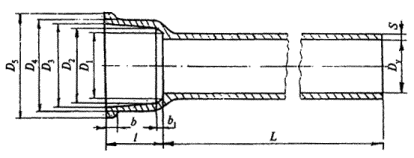
Table 4
In millimeters
|
Conditional pass Dy |
l min. |
|||||||||

An example of a symbol for a branch witha = 120° and Dy = 50 mm:
О 120°-50 GOST 6942-98
Same with a = 150° and Dat = 100D (extended) mm:
O 150°-100D GOST 6942-98

1 - type I bell, 2 - shank
Table 17
Dimensions in millimeters
|
Conditional pass |
Weight, kg |
||||
|
At a = 45° ± 1° 30" |
|||||
|
At a = 60° ± l° 30" |
|||||
4.20 Two-plane crosspieces
4.20.1 Two-plane crosspieces are manufactured in two versions: right and left.
4.20.2 The design and dimensions of two-plane crosses must correspond to those indicated on and in Table 18.
An example of a symbol for a two-plane crossDat = 150 mm right-hand version:
KD-150 ´ 100 ´ 50 GOST 6942-98
The same, in the left version:
LKD-150 ´ 100 ´ 50 GOST 6942-98

a = 87° 30" ± 1° 30"; 1 - Type I bell; 2 - Type III bell; 3 - shank
Castings whose weight exceeds the maximum are considered acceptable provided that in all other quality characteristics they comply with this standard.
The anti-corrosion coating must be continuous, durable, smooth, without cracks or bubbles, firmly adhered to the metal of the product and should not be sticky.
On the surface of the pipe coating, ring marks from supports for rolling pipes are allowed, and on the surface of the coating of fittings - traces from the hooks of chain conveyor hangers, as well as drips caused by the runoff of the anti-corrosion compound from pipes and fittings, or discontinuities in the coating.
5.4 Completeness
5.4.1 The manufacturer must complete pipes and fittings for delivery in an assortment determined by the customer’s order.
5.5 Labeling and packaging
Trademark of the manufacturer;
Product designation;
Designation of this standard.
5.5.2 Pipes are packaged in containers, bags, cassettes or bundles tied with wire.
When packing, pipes are laid with sockets alternately in opposite directions. Shaped parts are placed on box pallets or containers in accordance with GOST 26598 - 6.3; , and applying the control methods specified in.
6.8. If, during inspection, at least one product does not meet the requirements of this standard for any indicator, then a double number of products from that batch are re-tested for this indicator.
If the results of the re-inspection are unsatisfactory, the batch of products is rejected or the products are accepted piece by piece and the indicators for which unsatisfactory results were obtained during the re-inspection are checked.
7 Control methods
7.1 The depth of bleaching and the dimensions of the bleached layer () are checked on products rejected for other indicators by splitting them and measuring the depth and dimensions of the bleached layer with a ruler or caliper according to GOST 166.
7.2 The appearance and quality of product surfaces () and the appearance of the anti-corrosion coating of products () are checked visually without the use of magnifying devices by comparing the product being tested with the standard.
7.3 Deviations from the dimensions of pipes and fittings ( - ) are checked using universal measuring instruments that provide the necessary measurement accuracy. Measurements are carried out in two mutually perpendicular directions. The arithmetic mean of the results of two measurements is considered the outer (inner) diameter. In this case, the result of each measurement must be within the permissible deviations.
7.4 Checking the mass of products and deviations from it () is carried out by weighing the products on scales with an accuracy class of no rougher than 2.
7.5 Determination of the presence and value of pipe non-straightness ()
7.5.1 Equipment and tools:
Control horizontal plate;
Two steel prismatic supports of the same height.
7.5.2 Carrying out the test
Two prismatic supports are installed parallel to each other at a distance from each other of more than half the length of the pipe being tested on the control plate and the pipe is laid on them with the deflection downwards. Using a height gauge, the distance from the surface of the slab to the bottom point of the pipe at the point of its greatest deflection is measured with an accuracy of 0.1 mm.
7.5.3 Calculation of test results
The value of the deviation from straightness of the pipe per 1 m of its lengthDcalculated using the formula
where a is the height of the support, mm;
b - distance from the horizontal surface of the slab to the bottom point of the pipe, mm;
l - distance between prismatic supports, m.
7.6 The softening temperature of the anti-corrosion coating () is checked according to GOST 11506.
7.7 The adhesion strength of the anti-corrosion coating to the metal of the product () is checked by making cuts in the form of a grid on the coating with a knife blade with distances between the cut lines of at least 40 mm.
The adhesion of the coating is considered strong if the coating does not peel off when making cuts.
7.8 The stickiness of the anti-corrosion coating () is checked at an ambient temperature of 15 to 30 ° C by lightly pressing a clean sheet of writing paper to the coating of the product in accordance with GOST 18510.
A coating is considered non-tacky if, after removing the paper, no traces of the coating remain on it.
The stickiness of the coating is checked no earlier than 24 hours after applying it to the product.
7.9 Checking the tightness of pipes and fittings ( )
7.9.1 Devices, materials and equipment:
A stand equipped with a pressure gauge with a division value not coarser than 0.01 MPa (0.1 kgf/cm 2);
A pump creating a hydraulic pressure of 0.2 MPa (2 kgf/cm2);
Plugs (blind and with pipes).
7.9.2 Carrying out the test
The assembled pipes and fittings are placed on the stand, and a plug with a pipe for connection to the pump is installed on the hole closest to the pump, and a plug with a pipe for draining water is installed on the other hole. If there are other holes, then blind plugs are installed on them. Using a pump, the tested section of the pipeline is filled with water, the water drainage pipe is closed with a valve or other shut-off device, and a pressure of at least 0.1 MPa (1.0 kgf/cm2) is created in it. This pressure is maintained for at least 15 s, during which the connections of the pipeline section are inspected.
7.9.3 Test results
A section of the pipeline is considered sealed if, upon inspection, no water leaks through its walls or socket joints, or fogging of the outer surfaces of pipes and fittings is detected.
8 Transportation and storage
8.1 Pipes and fittings are transported by all types of transport in accordance with the rules for the carriage of goods in force for this type of transport.
8.2 Pipes should be stored sorted by nominal diameters, fittings - by types and sizes in conditions that exclude the possibility of mechanical damage to the products.
9 Installation and operating instructions
9.1 Installation of pipes and fittings must be carried out using technology that ensures their operability and tightness of connections, in accordance with building codes and regulations.
9.2 Pipes and fittings can be connected to each other by caulking the sockets with tarred strands and cement or by pouring heated sulfur, as well as using a rubber sealing collar.
10 Manufacturer's warranty
10.1 The manufacturer guarantees that pipes and fittings for them comply with the requirements of this standard, subject to the rules of transportation, storage, installation and operation.
10.2 Guaranteed shelf life - 3 years from the date of manufacture.
The warranty period is 2 years from the date of commissioning or sale within the warranty storage period.
Keywords:Cast iron sewer pipes, fittings, internal sewerage systems for buildings
GOST 6942-98
INTERSTATE STANDARD
Specifications
Official publication
INTERSTATE SCIENTIFIC AND TECHNICAL COMMISSION FOR STANDARDIZATION, TECHNICAL REGULATION AND CERTIFICATION IN CONSTRUCTION (INTKS)
Preface
1 DEVELOPED by the Scientific Research Institute of Sanitary Engineering (NIIsantekhniki) of the Russian Federation
INTRODUCED by the State Construction Committee of Russia
2 ADOPTED by the Interstate Scientific and Technical Commission for Standardization, Technical Regulation and Certification in Construction (MNTKS) on November 12, 1998.
|
State name |
Name of the state construction management body |
|
Republic of Armenia |
Ministry of Urban Development of the Republic of Armenia |
|
The Republic of Kazakhstan |
Committee on Housing and Construction Policy under the Ministry of Energy, Industry and Trade of the Republic of Kazakhstan |
|
Republic of Kyrgyzstan |
State Inspectorate for Architecture and Construction under the Government of the Kyrgyz Republic |
|
The Republic of Moldova |
Ministry of Territorial Development, Construction and Communal Services of the Republic of Moldova |
|
Russian Federation |
Gosstroy of Russia |
|
The Republic of Tajikistan |
State Construction Committee of the Republic of Tajikistan |
3 INSTEAD OF GOST 6942.0-80 - GOST 6942.24-80, GOST 4.227-83.
4 ENTERED INTO EFFECT on January 1, 1999 as a state standard of the Russian Federation by Decree of the State Construction Committee of Russia dated December 31, 1998 No. 31.
This standard cannot be fully or partially reproduced, replicated and distributed as an official publication on the territory of the Russian Federation without permission from the Gosstroy of Russia
ISBN 5-88111-166-4 © Gosstroy of Russia, State Unitary Enterprise TsPP, 1999
1 area of use............................................... ....................................1
3 Assortment................................................... ........................................................ ..2
4 Types, designs and sizes.................................................... .......................6
5 Technical requirements........................................................ ............................36
6 Acceptance rules................................................................... .....................................38
7 Control methods................................................................... ........................................39
8 Transportation and storage................................................................... ...................41
9 Installation and operating instructions................................................................. .........42
10 Manufacturer's guarantees................................................... ...............................42
INTERSTATE STANDARD
CAST IRON SEWER PIPES AND FITTINGS FOR THEM
Specifications
CAST IRON WASTE PIPES AND FITTINGS Specifications
Date of introduction 1999-01-01
1 area of use
This standard applies to cast iron sewer pipes and fittings for them intended for internal sewage systems of buildings.
Mandatory requirements for product quality are set out in: 5.1; 5.2.2 - 5.2.4; 5.2.7; 5.2.8; 5.3.1; 5.3.2.
2 Normative references
GOST 164-90 Height gauges. Specifications
GOST 166-89 Calipers. Specifications
GOST 1412-85 Cast iron with flake graphite for castings. Stamps
GOST 9812-74 Petroleum insulating bitumens. Specifications
GOST 11506-73 Petroleum bitumens. Method for determining the softening temperature by ring and ball
GOST 15150-69 Machines, instruments and other technical products. Versions for different climatic regions. Categories, operating, storage and transportation conditions regarding the impact of environmental climatic factors
Official publication
GOST 18510-87 Writing paper. Technical specifications GOST 26358-84 Iron castings. General technical conditions GOST 26598-85 Containers and packaging means in construction. General technical conditions
GOST 26645-85 Castings from metals and alloys. Dimensional, mass and machining allowances.
3 Assortment
3.1 The range of pipes and fittings must correspond to those indicated in Table 1.
Table 1
|
Name |
Conditional diameters, mm |
Symbol |
||
|
graphic |
alphabetic |
|||
|
Pipes | ||||
|
Pipes compensatory | ||||
|
Transition pipes | ||||
|
Name |
Conditional diameters, mm |
Symbol |
||
|
graphic |
alphabetic |
|||
|
Low knees | ||||
|
Bends 110° and 120° |
About 110°"/>y or |
|||
|
Bends 135° | ||||
|
Bends 150° | ||||
|
Tee bends |
OTPr-100x50 or |
|||
|
instrumentation |
LOTPr-100x50 |
|||
|
Straight tees | ||||
Continuation of Table I
|
Name |
Conditional diameters, mm |
Symbol |
||
|
graphic |
alphabetic |
|||
|
Straight compensation tees |
TPK-D y X d y |
|||
|
Straight low tees | ||||
|
Straight transition tees |
TPR-100/50x100 |
|||
|
Straight transitional low tees |
TP PH-100/50x100 |
|||
|
Tees oblique 45° and 60° |
TK45°-D X d and TK6o°-i» y x d y |
|||
|
Crosspieces are straight |
KP-£) y x d y |
|||
|
Crosspieces are straight with an offset axis of removal |
KPS-D y X d y |
|||
|
Name |
Conditional diameters, mm |
Symbol |
||
|
graphic |
alphabetic |
|||
|
Crosses oblique 45° and 60° |
KK45°-D*d and KK60 °-D y *d y |
|||
|
Crosspieces two-plane |
KD-Lxdxd LKD-G>y x<1 у х |
|||
|
Sliding couplings | ||||
|
Stub | ||||
|
Tee bends transitional | ||||
|
Cleaning | ||||
4 Types, designs and sizes
4.1 Pipes
4.1.1 The design and dimensions of the pipes must correspond to those indicated in Figure 1 and Table 2.
It is allowed, by agreement between the consumer and the manufacturer, to manufacture pipes without sockets and supply them complete with MF couplings. The length of such pipes may differ from that indicated in the table.
An example of a symbol for a cast iron sewer pipe D y = 100 mm, L = 2000 mm:
ТЧК-100-2000 GOST 6942-98
|
Nominal diameter D y |
Construction length L | ||||||||||
|
Nominal diameter D y |
Construction length L | ||||||||||
4.2 Sockets and shanks of fittings
4.2.1 Sockets of fittings are made of four types: I, II, III, IV.
4.2.2 The design and dimensions of type I sockets must correspond to those indicated in Figure 2 and Table 3, type II - in Figure 3 and Table 4, type III - in Figure 4 and type IV - in Figure 5. Dimensions are given without taking into account the anti-corrosion coating . The option of manufacturing sockets of types I, I, IV without an annular groove on the inner surface of the sockets is allowed.

Table3 In millimeters
|
Nominal diameter D y | |||||||||||

*Dimensions for reference
Figure 3
Table 4 In millimeters

Figure 4

*Dimensions for reference
Figure 5
4.2.3 The design and dimensions of the shanks of the fittings must correspond to those indicated in the figure and table 5.

Table 5 In millimeters
4.3 Connections
4.3.1 The design and dimensions of the nozzles must correspond to those indicated in Figure 7 and Table 6.
An example of a pipe designation D y = 100 mm, L - 250 mm;
1 P-100-250 GOST 6942-98 2

1 - type I socket; 2 - shank Figure 7
Table 6 Dimensions in millimeters
4.4 Compensation pipes
4.4.1 The design and dimensions of the expansion pipes must correspond to those shown in Figure 8 and Table 7.
An example of a symbol for a compensation pipe D y = 100 mm:
PK-100 GOST 6942-98/2

Figure 8
Table 7 Dimensions in millimeters
4.5 Transition pipes
4.5.1 The design and dimensions of the transition pipes must correspond to those indicated in Figure 9 and Table 8.
An example of a designation for a transition pipe D = 50 mm and D y = 100 mm: y1
PP-50/100 GOST 6942-98 1 2

Figure 9
Table 8
4.6 Knees
4.6.1 The design and dimensions of the elbows must correspond to those shown in Figure 10 and Table 9.
An example of a designation for an elbow D = 100 mm;
K-100 GOST 6942-98

a = 92° 30"±1°30"; J - type I bell; 2 - shank
Figure 10
Table 9 Dimensions in millimeters
4.7 Low knees
4.7.1 The design and dimensions of the low elbows must correspond to those shown in Figure 11. The weight of the low elbow is 3.4 kg. Symbol for low knee:
KN-100 GOST 6942-98

1 - type IV bell; 2 - shank Figure 11
4.8 Bends 110° and 120°
4.8.1 The design and dimensions of the bends must correspond to those indicated in Figure 12 and in Tables 10 and 11.
An example of a symbol for a bend with a = 120° and D y = 50 mm:
О 120°-50 GOST 6942-98
The same, with a = 150° and D y = 100D (extended) mm:
O 150°- 100D GOST 6942-98

/ - socket type 1,2 - shank Figure 12
Table 10
Dimensions in millimeters
Table 11 Dimensions in millimeters
4.9 Instrument tees
4.9.1 Instrument tees are manufactured in two versions: right and left.
4.9.2 The design and dimensions of instrument tee bends must correspond to those shown in Figure 13. The mass of the tee bend is 7.0 kg.
Symbol of the instrument tee-bend in the right version:
OTPr GOST 6942-98 The same, in the left version:
LOTPr GOST 6942-98

I - socket type 1, 2 - socket type III, 3 - shank
Figure 13
4.10 Indents
4.10Л The design and dimensions of the indents must correspond to those indicated in Figure 14 and Table 12.
An example of a symbol for the indentation D y = 100 mm:
OTS-YuO GOST 6942-98

I - type I bell; 2 - shank
Figure 14
Table 12 Dimensions in millimeters
4.11.1 The design and dimensions of straight tees must correspond to those indicated in Figure 15 and Table 13.
An example of a symbol for a straight tee D y = 50 mm and d y = 50 mm:
TP-50x50 GOST 6942-98 The same, long, Z) = 100 mm and d y = 100D mm:
TP-100x100D GOST 6942-98

Table 13 Dimensions in millimeters
|
Conditional pass |
Weight, kg |
||||
4.12 Direct compensation tees
4.12.1 The design and dimensions of direct compensation tees must correspond to those indicated in Figure 16 and Table 14.
An example of the designation of a direct compensation tee D = 100 mm, d = 50 mm:
TPK-100x50 GOST 6942-98

1 - type II socket; 2 - type I bell; 3 - shank
Figure 16
Table 14
Dimensions in millimeters
4.13 Straight low tees
4.13.1 The design and dimensions of straight low tees must correspond to those shown in Figure 17. The weight of the tee is 5.8 kg.
Symbol for straight low tee:
TN- 100x100 GOST 6942-98

4.14.1 The design and dimensions of straight transition tees must correspond to those shown in Figure 18. The weight of the tee is 6.8 kg.
Designation of a straight transition tee:
TPR-100/50x100 GOST 6942-98

Figure 18
4.15.1 The design and dimensions of straight transition low tees must correspond to those shown in Figure 19. The weight of the tee is 4.7 kg.
Symbol of straight transition low tee: TPRN-100/50x100 GOST 6942-98

4.16 Oblique tees
4.16.1 The design and dimensions of oblique tees must correspond to those indicated in Figure 20 and Table 15.
An example of a symbol for an oblique tee with a = 45°, D y = 100 mm and d y ~ 50 mm:
TK 45°-100x50 GOST 6942-98
The same, with 60°, D y = 150 mm and d = 100 mm:
TK 60°-150x100 GOST 6942-98

Table 15 Dimensions in millimeters
|
Conditional pass |
Weight, kg |
||||
4.17.1 The design and dimensions of straight crosses must correspond to those indicated in Figure 21 and Table 16.
An example of a symbol for a straight cross with D = 100 mm and d = 50 mm:
U KP-100x50 GOST 6942-98

Figure 21
Table 16 Dimensions in millimeters
4.18.1 The design and dimensions of straight crosses with an offset axis of the outlet must correspond to those shown in Figure 22. The mass of the tee is 7.6 kg.
Symbol for a straight cross with an offset axis of removal:
KPS-100x50 GOST 6942-98

Figure 22
4.19 Oblique crosses
4.19.1 The design and dimensions of the oblique crosses must correspond to those indicated in Figure 23 and Table 17.
An example of a symbol for an oblique cross with a = 45°, D y = 100 mm and d y = 100 mm:
KK45°-100x100 GOST 6942-98
The same, with a = 60°, D y - 150 mm and d y = 50 mm:
KK 60° -150x50 GOST 6942-98 1

Table 17 Dimensions in millimeters
|
Conditional pass | |||||
|
Weight, kg |
|||||
4.20 Two-plane crosspieces
4.20.1 Two-plane crosspieces are manufactured in two versions: right and left.
4.20.2 The design and dimensions of two-plane crosses must correspond to those indicated in Figure 24 and Table 18.
An example of a symbol for a two-plane cross Z> y - 150 mm in the right version:
KD-150x100x50 GOST 6942-98
The same, in the left version:
L KD-150x100x50 GOST 6942-98


a = 87 o 30"±1°30"; 1 - type 1 bell; 2 - type III bell; 3 - shank
Figure 24
Table 18 Dimensions in millimeters
4.21 Couplings
4.21.1 The design and dimensions of the couplings must correspond to those shown in Figure 25 and Table 19.
Example of a designation for a coupling Z) y = 100 mm:
Mf-100 GOST 6942-98 7 1

Table 19
4.22 Sliding couplings
4.22.1 The design and dimensions of push-in couplings must correspond to those indicated in Figure 26 and Table 20.
An example of a symbol for a sliding coupling D y =100 mm:
MfN-100 GOST 6942-98
! / / ;■ , 7-7-7


1 - type II socket Figure 26
Table 20 Dimensions in millimeters
4.23 Revision
4.23.1 The design and dimensions of the revisions must correspond to those indicated in Figure 27 and Table 21.
An example of a revision symbol Z> y =100 mm:
R-100 GOST 6942-98
4.23.2 It is allowed to place the bolts in plane A-A and make cover 2 from steel.


1 - type I socket; 2 - cover; 3 - gasket; 4 - body; 5 - shank; 6 -
screw; 7 - bolt
Figure 27
Table 21
Dimensions in millimeters
4.24 Plugs
4.24.1 The design and dimensions of the plugs must correspond to those indicated in Figure 28 and Table 22.
An example of a designation for a plug D y =100 mm:
3-100 GOST 6942-98
4.24.2 It is allowed to place the bolts in the BB plane and make the cover 3 from steel.


1 - bolt; 2 - nut; 3 - cover; 4 - gasket; 5 - body; 6 - shank
Table 22
Dimensions in millimeters
Troche bends
n transitional
4.25.1 The design and dimensions of transition tees must correspond to those shown in Figure 29. The mass of the transition tees is 7.8 kg.
An example of a symbol for a transition tee:
OTP- 100x50 GOST 6942-98

1 - type I socket; 2 - shank Figure 29
4.26 Cleaning
4.26.1 The design and dimensions of the clearings must correspond to those indicated in Figure 30 and Table 23.
An example of a symbol for cleaning:
Pr-100 GOST 6942-98
4.26.2 Cleaners must be supplied complete with all parts indicated in the figure and assembled.

1 - type I socket; 2 - nut; 3 - bolt; 4 - cover; 5 - gasket;
6 - body; 7 - shank
Figure 30
Table 23 Dimensions in millimeters
4.27 Dimensions and weight are given without taking into account the anti-corrosion coating.
5 Technical requirements
5.1 Cast iron sewer pipes and fittings for them should be manufactured in accordance with the requirements of this standard, according to design and technological documentation approved in the prescribed manner.
5.2 Characteristics
5.2.1 Pipes and fittings for them must not have defects that impair their installation and operational qualities: spills, build-ups, drops of metal, slag deposits on the outer and inner surfaces. It is allowed to eliminate minor defects caused by the production method and which do not impair the quality of the products.
5.2.2 Pipes and fittings for them must not have a chill over the entire outer surface with a depth of more than 1 mm, and at the ends and outer surface of the smooth ends of pipes at a length of 60 mm from the end and in places where molds are separated on fittings - with a depth of more than 2 mm.
5.2.3 Deviations from the nominal dimensions of the internal diameters of the sockets of pipes and fittings and the outer diameters of the smooth ends of pipes and tails of fittings (before applying an anti-corrosion coating to the product) should not exceed ±2 mm. Deviations from the dimensions of construction lengths in products of all types and diameters should not exceed ± 0.9%.
5.2.4 It is allowed to thicken by no more than 2 mm the walls of the smooth ends of pipes in a section up to 150 mm long and the shanks of fittings in a section up to 70 mm long from their ends with a corresponding reduction in the internal diameters of the products in these places, as well as rounding on the outside the ends of the smooth ends of pipes and the shanks of fittings.
5.2.5 Maximum deviations from the nominal dimensions of castings of products, with the exception of those regulated in 3.2.3 and 3.2.4, must correspond to the 11t accuracy class according to GOST 26645.
5.2.6 Deviations from the calculated values of the masses of products established in the design standards, and the dimensions of these products (for the calculation of which the density of cast iron is taken to be 7.1 g/cm3) must correspond to the 11 t accuracy class according to GOST 26645.
Castings whose weight exceeds the maximum are considered acceptable provided that in all other quality characteristics they comply with this standard.
5.2.7 Deviations from straightness of pipes D y 100 and D y 150 mm should not exceed 2 mm per 1 m length, and for pipes D y 50 mm - 5 mm per 1 m length.
5.2.8 Pipes and fittings assemblies, after applying an anti-corrosion coating to their internal and external surfaces and sealing the sockets, must withstand a hydraulic pressure of at least 0.1 MPa (1.0 kgf/cm2).
5.3 Requirements for raw materials, materials and components
5.3.1 Pipes and fittings for them must be made of gray cast iron with flake graphite in accordance with GOST 1412 and in accordance with the requirements for castings in accordance with GOST 26358.
5.3.2 The outer and inner surfaces of pipes and fittings must be coated with an anti-corrosion composition based on bitumen grade BNI 1U-3 according to GOST 9812 or other compositions that ensure the softening temperature of the anti-corrosion coating is not lower than 333 K (60 ° C) and operating conditions UHL 4 GOST 15150.
The anti-corrosion coating must be continuous, durable, smooth, without cracks or bubbles, firmly adhered to the metal of the product and should not be sticky.
On the surface of the pipe coating, ring marks from supports for rolling pipes are allowed, and on the surface of the coating of fittings - traces from the hooks of chain conveyor hangers, as well as drips caused by the runoff of the anti-corrosion compound from pipes and fittings, or discontinuities in the coating.
5.4 Completeness
5.4.1 The manufacturer must complete pipes and fittings for delivery in an assortment determined by the customer’s order.
5.5 Labeling and packaging
5.5.1 Pipes and fittings must have markings cast or applied with indelible paint on the end or image
surface of the bell or directly behind the bell and including:
Trademark of the manufacturer;
Product designation;
Designation of this standard.
5.5.2 Pipes are packaged in containers, bags, cassettes or bundles tied with wire.
When packing, pipes are laid with sockets alternately in opposite directions. Shaped parts are placed on box pallets or containers in accordance with GOST 26598, and the carrying capacity of the container must be fully used.
6 Acceptance rules
6.1 Pipes and fittings are accepted in batches. A batch is considered to be the number of pipes and fittings manufactured during one shift and documented with one quality document.
6.2 To check the compliance of pipes and fittings with the requirements of this standard, the manufacturer carries out acceptance and periodic tests of products.
6.3 During acceptance tests, products are checked for compliance with the requirements:
5.2.2 - 0.5% of products from the batch;
5.2.1 and 5.3.2 regarding the appearance of the anti-corrosion coating - 100% of the products in the batch;
5.2.3 - 5.2.8, 5.3.2 in terms of the stickiness of the anti-corrosion coating - at least 2% of products from the batch.
6.4 Periodic tests are carried out at least once a quarter.
6.5 Products that have passed acceptance tests are subject to periodic testing.
6.6 During periodic testing, products are checked for compliance with the requirements of 5.2.3; 5.5.1 and 5.3.2 in terms of determining the softening temperature of the anti-corrosion coating and its adhesion strength to metal in the amount of 0.5% of products from the batch.
6.7 The consumer has the right to carry out a control check of pipes and fittings according to any quality indicator, observing
the procedure for selecting products given in 6.3; 6.6, and applying the control methods specified in section 7.
6.8 If, during inspection, at least one product does not meet the requirements of this standard for any indicator, then a double number of products from that batch are re-tested for this indicator.
If the results of the re-inspection are unsatisfactory, the batch of products is rejected or the products are accepted piece by piece and the indicators for which unsatisfactory results were obtained during the re-inspection are checked.
7 Control methods
7.1 The depth of bleaching and the dimensions of the bleached layer (5.2.2) are checked on products rejected for other indicators by splitting them and measuring the depth and dimensions of the bleached layer with a ruler or caliper according to GOST 166.
7.2 The appearance and quality of product surfaces (5.2.1) and the appearance of the anti-corrosion coating of products (5.3.2) are checked visually without the use of magnifying devices by comparing the product being tested with the standard.
7.3 Deviations from the dimensions of pipes and fittings (5.2.3 - 5.2.5) are checked using universal measuring instruments that provide the necessary measurement accuracy. Measurements are carried out in two mutually perpendicular directions. The arithmetic mean of the results of two measurements is considered the outer (inner) diameter. In this case, the result of each measurement must be within the permissible deviations.
7.4 Checking the mass of products and deviations from it (5.2.6) is carried out by weighing the products on scales with an accuracy class of no rougher than 2.
7.5 Determination of the presence and value of pipes (5.2.7)
and non-linear
7.5.1 Equipment and tools:
Height gauge according to GOST 164;
Control horizontal plate;
Two steel prismatic supports of the same height.
7.5.2 Carrying out the test
Two prismatic supports are installed parallel to each other at a distance from each other of more than half the length of the pipe being tested on the control plate and the pipe is laid on them with the deflection downwards. Using a height gauge, the distance from the surface of the slab to the bottom point of the pipe at the point of its greatest deflection is measured with an accuracy of 0.1 mm.
7.5.3 Calculation of test results
The deviation from straightness of the pipe per 1 m of its length A is calculated using the formula
where a is the height of the support, mm;
b - distance from the horizontal surface of the slab to the bottom point of the pipe, mm;
I - distance between prismatic supports, m.
7.6 The softening temperature of the anti-corrosion coating (5.3.2) is checked according to GOST 11506.
7.7 The adhesion strength of the anti-corrosion coating to the metal of the product (5.3.2) is checked by making grid-shaped cuts on the coating with a knife blade with distances between cut lines of at least 40 mm.
The adhesion of the coating is considered strong if the coating does not peel off when making cuts.
7.8 The stickiness of the anti-corrosion coating (5.3.2) is checked at an ambient temperature of 15 to 30 °C by lightly pressing a clean sheet of writing paper to the product coating according to GOST 18510.
A coating is considered non-tacky if, after removing the paper, no traces of the coating remain on it.
The stickiness of the coating is checked no earlier than 24 hours after applying it to the product.
7.9 Checking the tightness of pipes and fittings (5.2.8)
7.9.1 Devices, materials and equipment:
A stand equipped with a pressure gauge with a division value not coarser than 0.01 MPa (0.1 kgf/cm 2);
A pump creating a hydraulic pressure of 0.2 MPa (2 kgf/cm2);
Plugs (blind and with pipes).
7.9.2 Carrying out the test
The assembled pipes and fittings are placed on the stand, and a plug with a pipe for connection to the pump is installed on the hole closest to the pump, and a plug with a pipe for draining water is installed on the other hole. If there are other holes, then blind plugs are installed on them. Using a pump, the tested section of the pipeline is filled with water, the water drainage pipe is closed with a valve or other shut-off device, and a pressure of at least 0.1 MPa (1.0 kgf/cm2) is created in it. This pressure is maintained for at least 15 s, during which the connections of the pipeline section are inspected.
7.9.3 Test results
A section of the pipeline is considered sealed if, upon inspection, no water leaks through its walls or socket joints, or fogging of the outer surfaces of pipes and fittings is detected.
8 Transportation and storage
8.1 Pipes and fittings are transported by all types of transport in accordance with the rules for the carriage of goods in force for this type of transport.
8.2 Pipes should be stored sorted by nominal diameters, fittings - by types and sizes in conditions that exclude the possibility of mechanical damage to the products.
9 Installation and operating instructions
9.1 Installation of pipes and fittings must be carried out using technology that ensures their operability and tightness of connections, in accordance with building codes and regulations.
9.2 Pipes and fittings can be connected to each other by caulking the sockets with tarred strands and cement or by pouring heated sulfur, as well as using a rubber sealing collar.
10 Manufacturer's warranty
10.1 The manufacturer guarantees that pipes and fittings for them comply with the requirements of this standard, subject to the rules of transportation, storage, installation and operation.
10.2 Guaranteed shelf life - 3 years from the date of manufacture.
Warranty period of operation - 2 years from the date of commissioning of the facility
operation or sale within the warranty period of storage.
UDC 696.133:669.13:006.354 OKS 91.140.70 Zh21 OKSTU 4925
Key words: cast iron sewer pipes, fittings, internal sewage system of buildings
Interstate standard
CAST IRON SEWER PIPES AND FITTINGS FOR THEM
Specifications
GOST 6942-98
Head ed. dept. L, F. Zavidonskaya Editor L.N. Kuzmina Technical editor L.Ya. Head Corrector M.E. Shabalina, I.N. Gracheva Computer layout EL. Prokofiev
Sold individually. The price is for 1 piece.
Submitted cast iron pipe with DN 100 made in accordance with GOST 6942-98, which means that all declared technical characteristics are guaranteed to be met. Cast iron pipe DN 100 mm is designed for drainage of toilet drains. The length of the pipe is 2 m. A smaller diameter of sewer pipes is used for sinks, sinks and washbasins.
The expansion at the end of the pipe - the bell - has an important functional purpose. With the help of such an extension, convenient and reliable installation of a sewer or water supply line is ensured. A section of one pipe is “caulked” into the socket of another and the joint is sealed with tow or other suitable material. During diameter transitions, as well as turns and branches of the pipe system, the connection of individual pipeline elements is ensured by cast iron pipe fittings - tees, bends, elbows, branch pipes, etc. Cast iron fittings are selected to fit the pipe, and the process of connecting them is similar to that described above.
Cast iron pipes are intended for sewer and fecal drainage systems in public, industrial and residential buildings.
Specifications:
Characteristics
Delivery
In-store purchases are delivered total cost of which is more than 2000 rub. ( excluding delivery, for individuals). Minimum order amount for Legal entities 5000 rub.
Express order for buyers from regions: If you pay for your purchase on the day of your order, we will immediately send the order to the selected shopping center (check with the manager for details).
For pickup, you can place an order of any value.
Delivery within Moscow (within the Moscow Ring Road):
- delivery of KAISER mixers - 300 rub
- delivery of VIKO mixers - 500 rub
- delivery other goods -500 rub



















